6. Purchased Lives
The issues involving states’ rights, economies, and cherished ways of life have made the legacy of slavery
a particularly difficult problem in the United States, and we shall spend three-quarters of the class on
the various attempts to address it, as reflected in the art and literature of each period. But much of the
blame can be laid at the door of Britain, which dominated the transatlantic slave trade for over a century,
and whose manufacturers benefitted from cheap imports from the slaveholding South. By the same token, though,
Britain also led the way in Abolition, by banning the slave trade, ending slavery in its own colonies, and
bringing nations together in an international treaty—all in the first forty years of the century.
The first section of the class will deal with those first steps towards Abolition, primarily in Britain. We
then turn to America with a look at Harriet Beecher Stowe’s Uncle Tom’s Cabin, which provided the
Inspiration to shift the anti-slavery movement into top gear. After the break, we look at Emancipation and
the Civil War, then at the sorry train of events that followed with Reconstruction and Jim Crow. rb.
The script, videos, and images will be posted immediately after class.
TO THINK ABOUT
Two images of the Civil War, one by a photographer, the other by a painter. Click the images show larger
versions, the click the link for some questions to ponder, and finally click the next link for some facts.
Here are brief bios of the major artists considered in the class, listed in order of birth.
An alphabetical listing of artists for the whole course can be found at the
BIOS link on the syllabus page.
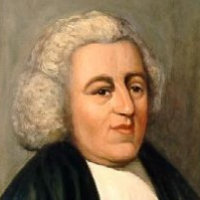 |
John Newton, 1725–1807. English cleric and writer.
Author of the hymn "Amazing Grace," Newton was originally a man of no great religious faith. After serving with the Royal Navy, he became a captain and then owner of a fleet of slave ships. When wrecked off the coast of Ireland, his desperate prayer was answered, and he began a spiritual change, devoting himself to God, giving up the slave trade, and studying for the priesthood.
|
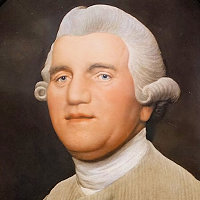 |
Josiah Wedgwood, 1730–95. English ceramicist.
Wedgwood's neo-classsical designs and the new materials he developed brought him a fashionable clientele, but he was also an innovator in marketing for the wider public, and the firm he founded is still going strong. He was an ardent abolitionist, producing at his own expense iconic plates and medallions with the words "Am I not a Man and Brother?"
|
 |
Samuel Jennings, 1755–1834. American painter.
Jennings was born and trained in Philadelphia, but spent most of his career in London, where he went originally (at Franklin's recommendation) to study with Benjamin West. His 1792 painting The Genius of America Encouraging the Emancipation of the Blacks, may be the first work by an American artist with an Abolitionist theme. [The image is by him, not of him.]
|
 |
George Morland, 1763–1804. English painter.
Morland specialized in rustic subjects and landscapes, often painting for the print marked. His Slave Trade of 1791 is something of a departure from his usual style.
|
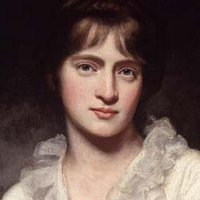 |
Amelia Opie, 1769–1853. English writer.
Amelia Alderson was raised in an activist family, and became friends with Mary Wollstonecraft and others. In addition to writing several novels, she was also an active polemicist for the Abolitionist cause, writing the poem for children, "The Black Man's Lament" of "How Sugar is Made." The image is a detail of a portrait by her husband, John Opie.
|
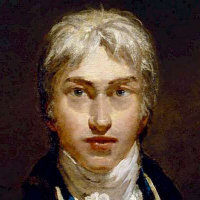 |
Joseph Mallord William Turner, 1775–1851. English painter.
Rivaled only by Constable, Turner was the dominant British landscape painter of the first half of the 19th century, he started his career with topographical views intended for engraving, and ended with works whose subjects were dissolved in veils of paint and light.
|
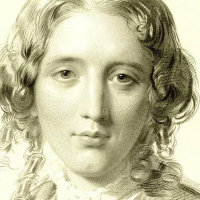 |
Harriet Beecher Stowe, 1811–96. American writer.
Living in Cincinnati, where he father was President of a theological seminary, Stowe became aware of slaves escaping by means of the Underground Railroad. Becoming passionate in the cause of Abolition, she published Uncle Tom's Cabin in 1852, a book whose immediate popularity energized the forces that ultimately led to Emancipation and the Civil War.
|
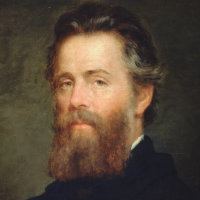 |
Herman Melville, 1819–91. American writer.
Melville's Moby-Dick (1851) is a landmark in literature (not just in America) for its scope, its wealth of detail, and the apocalyptic scale of its vision. Although he wrote nothing else of this size, his earlier novels based on his time in the South Seas, his long short stories, and above all his posthumously published Billy Budd show a deep penetration into character and morality.
|
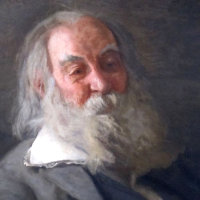 |
Walt Whitman, 1819–92. American poet.
Writing in a free verse style that would influence successors in the next century, Whitman combined a Transcendantalist philosophy with an acute observation; his later works were criticized for their overt sexuality. He worked as an army clerk and volunteer nurse in the Civil War.
|
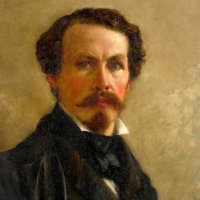 |
Eastman Johnson, 1824–1906. American painter.
Born in Maine, Johnson started his career as apprentice to a Boston Lithographer. He later moved to Europe to study with Emanuel Leutze and others. Returning to America, he specialized in portraits and genre scenes, often taken from African American life. He was a co-founder of the Metropolitan Museum.
|
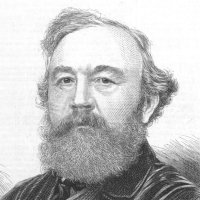 |
Eyre Crowe, 1824–1910. English painter.
Crowe made a living painting mainly genre scenes of society life. But a trip to the US in 1852 as secretary to William Makepeace Thackeray opened his eyes to the realities of slavery, and the drawings and paintings he made from that time contrast with the rest of his work.
|
 |
Alfred Waud, 1828–91. American painter.
Born in London, Waud emigrated to America in 1850, and took up work as an illustrator for magazines. In the Civil War, he attended every engagement of the Army of the Potomac between Bull Run and Petersburg, capturing the action in vivid sketches as well as producing drawings to be turned into formal engravings.
|
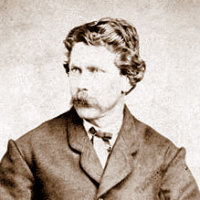 |
Timothy O’Sullivan, 1840–82. American photographer.
Very little is known about O'Sullivan's early life except that he was apprenticed as a teenager to photographer Matthew Brady. During the Civil War, he was associated with Brady once more, and many of the iconic photographs—such as the one of the Gettysburg dead—once attributed to his master are now acknowledged to be his. In later years, he produced some striking views of the American West.
|
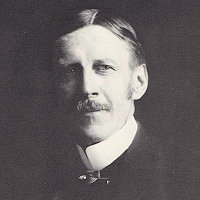 |
Richard Norris Brooke, 1847–1920. American painter.
Brooke trained at the Pennsylvania Academy of Fine Arts, but made several extended visits to France to absorb the realist painters there. Back home, now mainly in Washington DC, he specialized in subjets from African American life, making a point that such a rich fount of humanity and humor should be treated with respect rather than caricature.
|
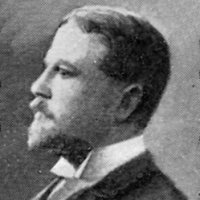 |
Thure de Thulstrup, 1848–1930. Swedish American painter.
After training at the Swedish Military Academy, he enlisted in the French Foreign Legion. When he moved to the US in 1873 and began work as a newspaper illustrator, it was natural that he should show himself especially skilled in military subjects, which became the cornerstone of his eventual career.
|
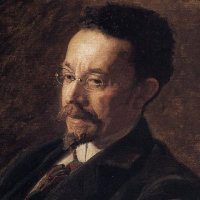 |
Henry Osawa Tanner, 1859–1937. American painter.
Born in Pittsburgh, Tanner trained in Philadelphia then moved to Paris in his early thirties, achieving early success in Biblical subjects exhibited at the Salon. He and his wife (also American) settled in France for the remainder of their lives. The recipient of an honorary Légion d'honneur, Tanner is notable as the first African American artist to achieve international renown.
|
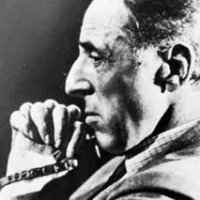 |
DW Griffith, 1875–1948. American filmmaker.
David Wark Griffith is honored as one of the giants of the early film industry. He was an innovator in film editing, and greatly expanded the range and complexity of cinema narrative. His 3-hour 1915 film The Birth of a Nation was simultaneously hailed as a masterpiece of the art and a racist invective that led to riots. All but three of the roughly 500 films were silent.
|
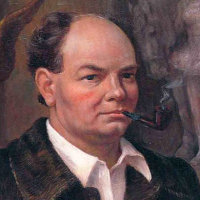 |
John Steuart Curry, 1897–1946. American painter and muralist.
One of the leading figures of the Midwestern Regionalist movement in the interwar period, Curry painted scenes from his home state of Kansas, and patriotic pictures for the government in WW2.
|

























































